One of the more common pieces of advice successful business owners pass on to fledgling entrepreneurs is to find your niche and corner the market.
Although this bumper-sticker statement might sound frustratingly vague on the surface, the success of many entrepreneurial ventures can be traced back to this concept.
Whoever coined this sugary sweet sentiment probably didn’t have tiny fashion accessories in mind. But that’s exactly what online pin merchant Pintrill is doing — they’re leading the pin pack.
Founded by a trio of friends-turned-entrepreneurs in Brooklyn, New York, Pintrill has spent the last two years riding a resurgence in popularity of pins. Yes, we mean those tiny metal studs with unique designs that often jazz up jacket lapels. But even a casual observer can look around while walking down the street these days and notice hats, jackets, and bags adorned with a variety of pins.
“It’s essentially the perfect accessory,” says Andrew Yung, one of the co-founders of Pintrill. [Pins are] gender neutral — guys can wear them, girls can wear them. You can put them on anything, like your bag or your shirt or hat, and it’s a perfect canvas for any design as well.”
The rebirth of pin culture combined with this ambitious trio’s taste for pop-culture inspired pins has helped their designs resonate with an ever-growing audience. They found their niche, and sales have quickly followed suit.
Turning Pins into Profit: A History of Pintrill
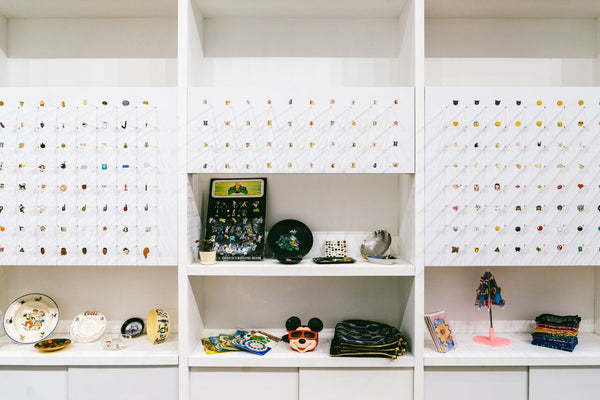
All photos courtesy of Pintrill
Started in April 2014, Pintrill is the brainchild of Andrew, his buddy Jordan Roschwalb, and Jordan’s girlfriend Doni Gitlin. Andrew, who is Toronto born and bred, lived in New York and worked in digital media after finishing university. Jordan was employed at Mercedes-Benz, and the friends put their heads together and devised their big business idea.
At the time, we saw a few brands making one-off pins, but no one was stepping up to the plate and owning it completely. So, we saw the opportunity and that was it.
It was Jordan who originally brought the idea for a pin business to Andrew and Doni, as he’s been a self-admitted enthusiast since childhood. Jordan commonly references the story of occasional trips to Harley Davidson dealerships, where he would buy a pin each time they visited. So, it’s no surprise that this deep love of a niche fashion accessory eventually translated into a booming business venture.
The trio dove in as part-time entrepreneurs, and launched their store on Shopify without second thoughts. After locking down a supplier (which they found simply by Googling “pin production,” FYI), Pintrill released its first six-pack of pins: the Pintrill logo, four hashtags in pin form, the “100” and fire emojis, as well as “blessed” and “good vibes only” word designs. And it was no accident that a third of their first collection were emoji inspired.
“The way we talk about emojis...they really are the hieroglyphics of our time,” Andrew said. “Everyone just kind of understands emojis intuitively at this point, which is why we continue to make them.”
And the designs hit home with accessory lovers. Within a few months, demand skyrocketed. The brand earned tons of play on social media as proud new pin owners showed off their style online.
“At the time, I was still working [in digital media], and I was continuing to work on Pintrill on evenings and weekends,” Andrew says. “And we just got to a point where I had to make the jump. There was too much work to be done, and it grew enough that I was able to jump over, so I made the move [to work on Pintrill full time] last October.”
After seeing the appetite, Pintrill nailed down multiple high-profile collaborations with the likes of Perry Ellis, Roc Nation, and Arizona (Andrew’s personal fav). They’ve also sold their designs in bulk to big-box resellers like Nordstrom and Urban Outfitters.
Between the these star-studded collaborations and the “cool factor” of Pintrill’s brand, the trio went from running their online-only business out of Jordan’s Brooklyn apartment to opening their own offline store within just two years.
“It’s been exciting to work with my friends and such a small team to grow something,” Andrew said.
 |
A great brand can help your products stand out from the crowd. Learn how with our free, high-impact reading list. |
Cultivating the In-Store Experience
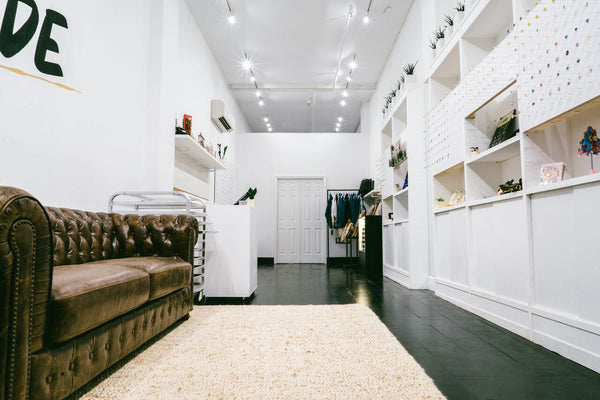
After launching a bevy of successful high-profile partnership pin collections (some that sold out almost instantaneously) and hosting a Nordstrom pop-up shop, the entrepreneurial trio decided to take their business to the next level with their own branded boutique.
According to Andrew, the boutique wasn’t simply a result of their success. A physical store was the next natural step in Pintrill’s quest for world domination.
We want to be a global brand. We want to be the Nike of pins.
“We needed to plant a flag like that and open a retail space. On top of that, pins are still a really tactile and physical object,” he says.
Opened in May 2016 in the heart of their Brooklyn ‘hood, the boutique displays some of their most popular pin collections in all their glory. From their original six-pin pack to their crying Drake and throwback Kanye studs, these enamel accessories are obviously the shining stars in this shop.
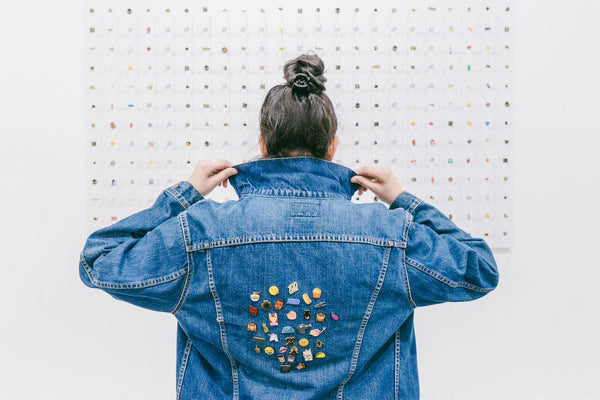
But Pintrill doesn’t simply hawk its own wares in their storefront — the owners worked to carefully curate a haven for fans of pin culture. While browsing through this pin-lover’s paradise, customers can try on the limited edition Levi’s denim jacket, which is encrusted with vintage pins and patches. The store also features hats and backpacks that are perfect for pinning, as well as a display of drawers coaxing “pin-heads” to bring and trade their own vintage pins. The “Buy, Sell, Trade” display is an homage to Jordan’s childhood love of pins, which he delights in sharing with customers.
Ready to start selling in store like Pintrill? Start your free 3-day trial with Shopify POS. Already have a Shopify store? Get the free Shopify POS App.
“Pins from the past are kind of like totems or symbols to commemorate moments that people have. Almost everybody who walks into our store that we talk to at least has a few pins from growing up. You go to the Grand Canyon, you pick up a pin. You go to a musical on Broadway, you pick up a pin.”
From Clicks to Bricks: Lessons Learned
While opening a brick-and-mortar iteration of their brand was always part of Pintrill’s game plan, the owners have gleaned plenty of knowledge from their foray into traditional retail. Here are some of the insights they’ve shared since making the transition to in-person sales:
Build an Interactive Experience
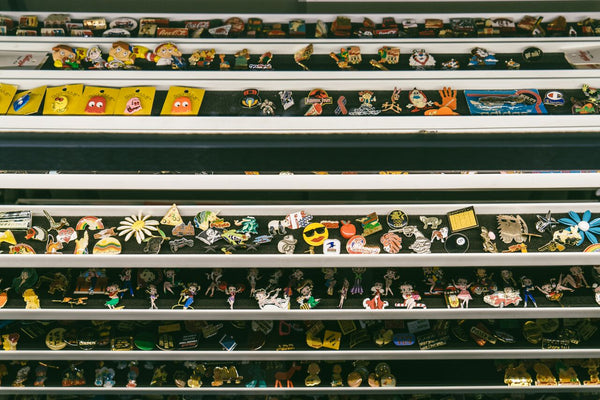
It’s not enough to simply sell your products. Create unconventional ways for customers to interact with your brand and products when browsing.
For example, the Buy/Sell/Trade display in Pintrill’s store grew organically from the common practice of trading pins. Andrew noted that visitors to Disney theme parks and Olympics attendees often trade distinct pins with one another to commemorate the experience.
Because this practice is ingrained in the community’s culture, it only made sense for Pintrill to integrate a trading area into their store.
Engage Your Community of Followers
Pintrill credits avid pin collectors community with much of their recent success. And that’s why they work hard to not only serve up quality designs and events, but also build lasting relationships with pin lovers and makers alike.
“The community is amazing, and we could exist if it weren’t for the community,” Andrew says. “And it’s exciting to see, because it started out as a grassroots thing with a lot of indie makers. We’re pretty much friends with everyone who makes pins. And we actually do a lot of pin trades in our store as well. We want to be an advocate for [the community] and continue to grow it.”
In his words, the community was there long before Pintrill. The brand is just aiming to highlight pin culture and make it accessible.
Reward Customers For Shopping in Store
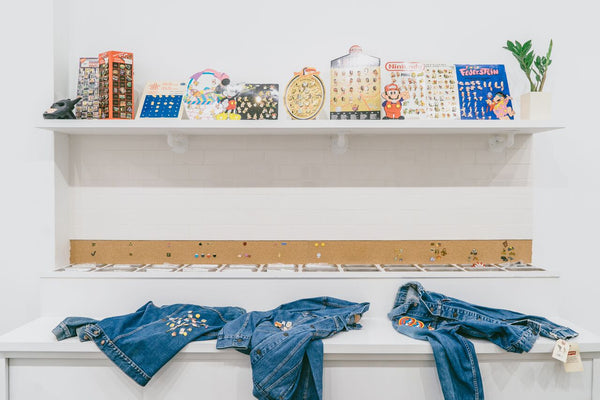
When Pintrill opened its flagship location, one of the ways the brand encouraged fans to check out their storefront was with their massive vintage pin collection. The shop boasted thousands of unique pins that could only be perused in person, which incentivized pin lovers to stop by and browse.Retailers can often lure online shoppers into their stores with exclusive offline offerings.
According to Andrew, they’ve also timed the release of some of their new designs to launch first in store and later online to encourage fans to visit their physical store.
A Final Word
Finding success isn’t always a slow march for small businesses — sometimes entrepreneurs stumble onto success, like in the case of Pintrill. They were set on creating a product that they loved, and that zeal resonated with the emerging community of pin and accessory lovers. Their inspiring story is further proof that it’s possible to turn a passion into profits.
Have any other merchant success stories like Pintrill’s? Rave about your favorite in the comments below.
Read more
- How One Disruptive Menswear Brand Transformed a Pop-up Space in SoHo, NY
- How HERO Backpacks Founder Used Her Personal Story to Build a Brand
- How Two Fashion Designers Used a Pop-Up Shop to Build Their Brand and Better Understand Their Customers
- How This Entrepreneur Created a Workwear Line With No Fashion Experience
- How elph ceramics' Unified its Customer Database and Lifted Retention Rates to 30% with Shopify POS
- How a 107-Year-Old Sneaker Company Reinvented Its Business With Omni-Channel Retail
- How The Rugged Society Simplified its Inventory Management with Shopify POS
- How Two Retirees are Out-Hustling You With a Gourmet Condiment Business
- Nalata Nalata Team Brings High Value Abandoned Carts Into Their Store
- Selling Anywhere: How These Retailers Built a Community With Multichannel Sales





